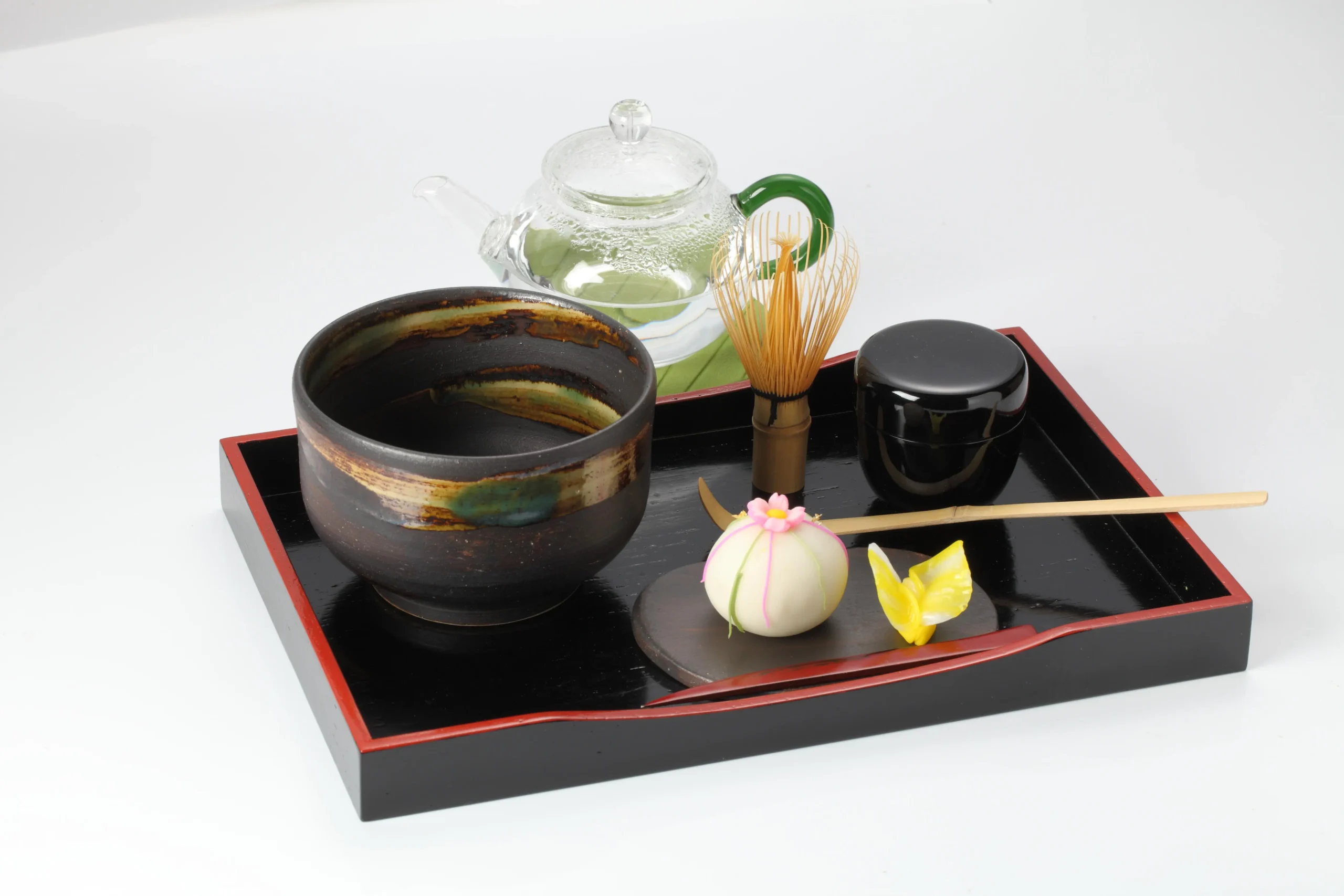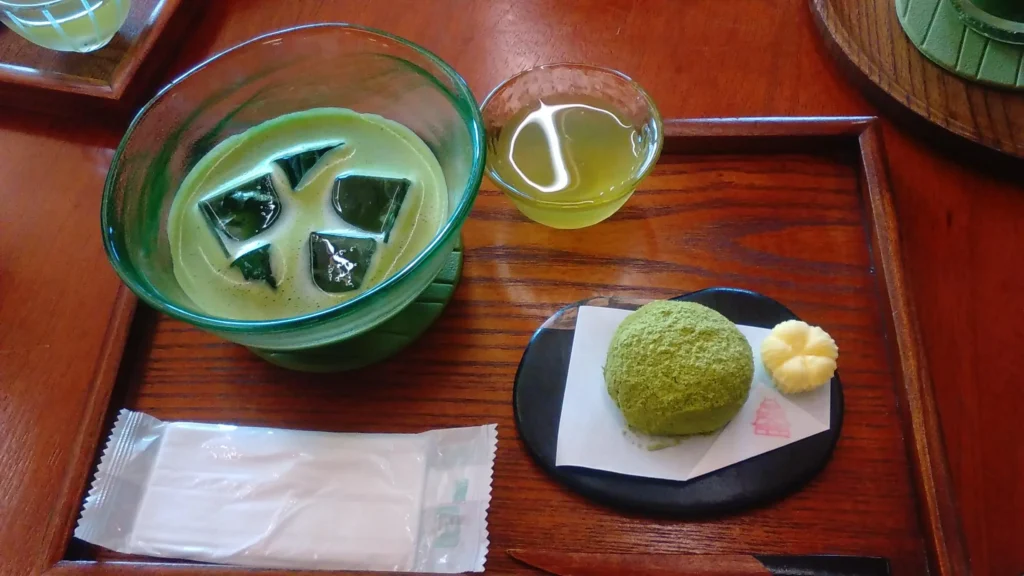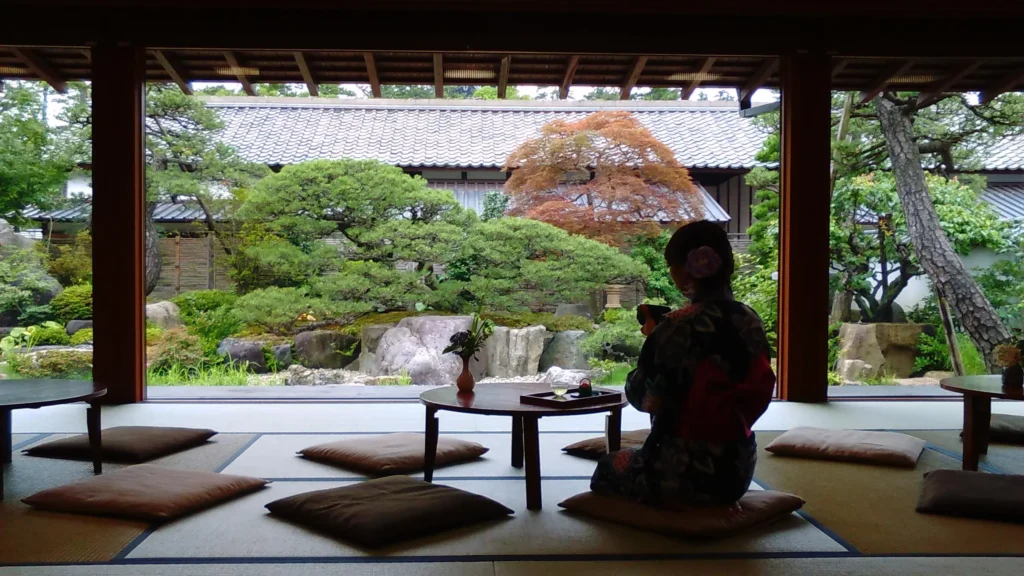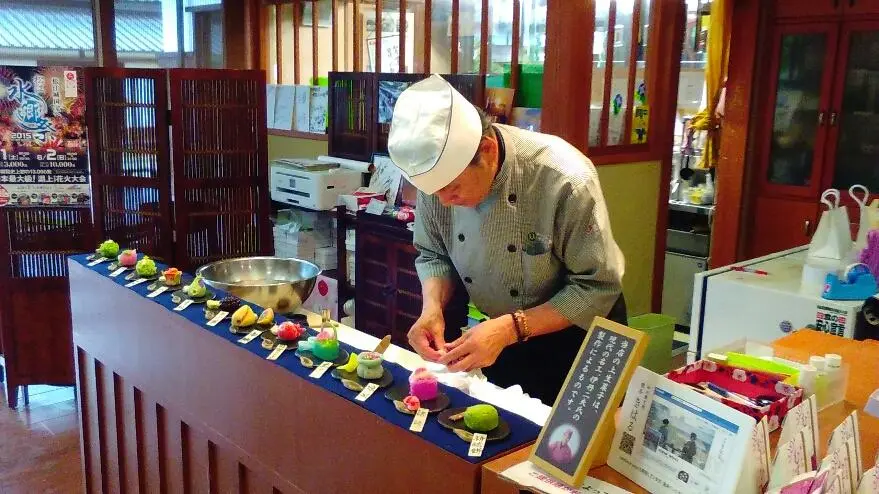Wagashi

Matsue City, located in Shimane Prefecture, is one of the cities in Japan most closely associated with wagashi, or traditional Japanese sweets. The history of wagashi stretches back centuries and reflects the Japanese culinary emphasis on seasonality. The first recorded “beautiful sweets”, what might be recognizably understood as wagashi, are found in the Tale of Genji, the first novel in Japanese history and an expression of Heian period (794-1185) values. These wagashi, known as tsubaimochii, included wrapping mochi in camellia leaves, and reflect wagashi’s close relationship with the natural world. Descendants of tsubaimochii still exist, known as tsubakimochi, indicating the persistence of tradition in wagashi culture.
Wagashi today are made from a variety of ingredients, including bean pastes, rice flour and seasonal ingredients such as pickled cherry leaves. They often employ natural designs, mimicking the forms of fruits, flowers and other objects found in nature, and vary immensely from season to season. Employing a high degree of craftsmanship, they also vary from region to region, with unique wagashi traditions present throughout Japan.
Wagashi making in Matsue took off during the Edo period (1603-1868). During this period, Matsue served as a jokamachi, or castle town, at the center of the Matsue Domain. Castle towns played an important role in feudal Japan, both as centers of administration and as homes to numerous samurai and artisans. As artisans in these communities catered to the tastes of samurai, daimyo lords and common people alike, jokamachi developed unique regional traditions and craft industries, which continue to enrich Japanese culture to this day.

One of Matsue’s most influential lords was Harusato Matsudaira (1751-1818), also known as Fumai. Fumai was famous for his love of the tea ceremony, or chanoyu. Wagashi play an important part in chanoyu, expressing the host’s hospitality and complementing the other fittings of the tearoom, including the tea utensils, floral arrangements and hanging scroll decorations. Wagashi also serve a practical function by balancing out the bitter flavor of matcha, the essential tea served at every tea ceremony, with sweet flavors, enhancing the attendee’s enjoyment of both. As a result, Fumai encouraged the development of new forms of wagashi and improvements in established wagashi traditions within Matsue.
Fumai’s favorite wagashi became famous as “Lord Fumai’s Three Great Sweets.” They are known as “Wakakusa”, “Yamakawa” and “Natane no Sato”, and remain popular to this day. “Wakakusa” (“Young Grass”) is made from glutinous rice formed into a rectangular shape and dusted with a powdery green sugar coating. “Yamakawa” (“Mountain Stream”) is a type of powdered sugar sweet known as a rakugan, which dissolves easily in the mouth. It is colored red and white to represent autumn leaves. “Natane no Sato” (“Rapeseed Village”) is another type of rakugan and is dyed yellow to represent butterflies flying over a field of rapeseed. The names of all of these sweets find their origins in poetry written by Lord Fumai, one of which is presented here:
Wakakusa (若草):
「曇るぞよ 雨降らぬうちに摘みてむ 栂尾山の春の若草」
Translation from Chado: The Way of Tea, by Sasaki Sanmi:
“Here come the clouds; let’s gather the green grasses of Mt. Toganoo before it starts to rain.”

Fumai’s influence can still be felt today throughout Matsue in spaces related to chanoyu and wagashi. One prominent site is the Meimei-an Teahouse, which Fumai designed in 1779 to fit his aesthetic sensibilities. Visitors to the Teahouse can enjoy wagashi in an original setting and gain a deeper appreciation for wagashi’s role in chanoyu. Another site is the Gessho-ji Temple, where the tombs of many of the Matsudaira daimyo are located. Known as the “Hydrangea Temple,” the temple is home to gardens filled with hydrangeas, lotus plants and turtles. Visitors can partake in matcha and wagashi while relishing breathtaking nature and well-preserved traditional architecture.

Wagashi continue to occupy an important place in the culture of Matsue today. Every April 24, Matsue celebrates Chanoyu no hi, or “Tea Ceremony Day”, to mark the anniversary of the passing of Lord Fumai. On this day, numerous events take place to celebrate and promote Matsue’s unique tea culture. This year, the Matsue Confectionery Association held a workshop teaching children how to make and enjoy matcha and wagashi, ensuring that the unique traditions of Matsue are passed on to the next generation. Wagashi further occupy center stage at the Matsue Castle Grand Tea Ceremony, hosted annually at Matsue Castle in October with the participation of practitioners of multiple schools of chanoyu.
Wagashi workshops can also be found throughout the city, some of the most prominent of which are Saiundo and Ichirikido. Visitors can stop by to taste an authentic piece of Matsue’s history and culture, as well as purchase exquisite gift boxes as souvenirs. Visitors interested in learning more about making wagashi can also attend making workshops, such as the Osewa-san “Wagashi Making Experience,” in which expert wagashi confectioners guide visitors through the process of making their own wagashi.

Matsue City is located in Shimane Prefecture, in the San’in region of western Japan. The city is accessible from major cities in Japan by train via the “Yakumo” limited express, departing from Okayama (2.5 hours), and the “Izumo Sunrise” sleeper train, departing from Tokyo (approximately 12 hours, overnight). Matsue is also accessible by plane via the nearby Izumoshi and Yonago Airports, with flights departing from all over Japan, and is a 9.5 hour drive from Tokyo.
Sources:
Tokyo Wagashi Association Webpage
A Short History of Wagashi
VOX POPULI: Celebrating the arrival of spring the same way as in ‘Tale of Genji’
Japanese Jokamachi (JPN)
The tea master Lord Fumai – 不昧公
Tea Ceremony
Shimane Wagashi (JPN)
Instilling the Spirit of the Tea Ceremony: Matsue’s Brand (JPN)
Chado the Way of Tea (Book)
Natane no Sato (JPN)
Meimei-an Teahouse Webpage
Gessho-ji Temple
Matsue Children experience tea ceremony culture ahead of “Chanoyu Day” (JPN)
Matsue Castle Grand Tea Ceremony
A wagashi-making experience